House (1977)
Directed by: Nobuhiko Ôbayashi
Written by: Chigumi Ôbayashi, Chiho Katsura
Starring: Ai Matsubara, Kimiko Ikegami, Kumiko Ohba, Miki Jinbo
AKA HAUSU
Japan
AVAILABLE ON BLU-RAY: NOW, from EUREKA ENTERTAINMENT
RUNNING TIME: 88 mins
REVIEWED BY: Dr Lenera, Official HCF Critic
.
Schoolgirl Gorgeous has plans for a summer vacation with her father who’s about to return home from writing music for a film in Italy, but he shows up with a new wife, Ryoko, which upsets Gorgeous, whose mother had died years earlier. Gorgeous writes a letter to her aunt asking if she could come visit her this summer instead, along with six of her friends. Once there, they present aunt with a watermelon. However, when one of their number Mac goes to get it back, she fails to return. Fantasy goes to look for her and is bittten in the bottom by Mac’s flying severed head, the first of a series of bizarre and scary happenings….
Thoroughly demented yet rather delightful, utterly bonkers yet sometimes beautiful, House is one those films that, while I was watching it, I said to myself: “Why has this film not been in my life before now”? It’s also a film that I’m not sure I can even describe properly. Even if you’re well steeped in the wonderful weirdness of much of Japanese cinema, House is one crazy movie that will probably make the viewer think that he or she has had unknowingly dropped some LSD, and will certainly make him or her wonder whatever it was that writer/director Obayashi Nobuhiko and co-writer Chiho Katsura were on when he both wrote and directed the thing, though it’s also a film which has been made with a lot of care – for example, nearly every shot is inventive or strange in some way, the man making what was probably a very meagre budget by Hollywood standards stretch as far as it can go and even turning it into a good thing by continually emphasising a very stylised artificiality. Scary the movie isn’t [well, there’s one rather unsettling mirror scene], but you may still be utterly transfixed to the screen, wondering what on earth you’re watching, wondering what on earth has just happened, and wondering what on earth is going to happen next. And yet, despite the hyperactive assault on the senses that this picture is, a film that, if you look away for five seconds you’ll probably miss something, the basic story becomes rather touching once the main gist of it is revealed, and there really is a lot of heart buried beneath the madness. Honestly.
This film originated because Toho Studios [yes, the Godzilla people!], wanted a movie that was similar to Jaws [which is certainly not what they got]. Obayashi’s very young daughter Chigumi provided many ideas, sometimes drawing upon her fears, and even suggested the English language title, while co-screenwriter Katsura was influenced by a short story called The Riddle by Walter de la Mare about two girls who visit their grandmother with unexpected results. The script sat around for two years because no director at Toho wanted to make it, until eventually they let first time director Obayashi do it after a radio drama based on the screenplay proved to be a success. The cast was mainly made up of models from advertisements Obayashi had made and crew and family members, with only Kimiko Ikegami and the very experienced Yoko Minamida having done movie acting before. A soundtrack album was released just before shooting and this and other music was played during shooting to help get the inexperienced cast members into the right mood. Ikegami was uncomfortable about a nude scene in the film, so to make her more comfortable, Minamida also took off her clothes. After Obayashi saw Minamida nude, he included a nude scene for her in the film which was not in the original script. Shot entirely on Toho’s largest sound stage, House was released on a double bill with the love story Pure Hearts In Mud and was a major hit though was barely seen overseas for over two decades.
You know you’re not going to be getting a totally serious film when the opening House logo sees lips become a mouth which spits out a hand while an ominous voice cries: “House”, but this in no way prepares you for what follows. We don’t get to the ‘house’ for over twenty minutes, but even just within five you may be exhausted by the way in which not one single moment is treated in an ordinary manner, from two friends saying goodbye with distinct lesbian under/overtones to the background of a train journey like a children’s picture book, to my favourite, Gorgeous telling of her family history presented as a silent movie that her friends comment on as if they’re watching. We meet our group of friends: Melody, Prof, Kung Fu, Fantasy, Mac, Sweetie, Mac and Gorgeous. You’ll probably guess what their main traits are from their names so I don’t need to go through them. Gorgeous seems to be the main character, and she’s not happy when dad returns with a new wife, Ryoko, who has a simply gorgeous entrance in slight slow motion, seen through lots of windows so there sometimes seems to be two of her as she passes each one, against a stunning backdrop of the sun setting. Yes, the latter is obviously fake, as are indeed all of the sky shots, but then they are in many very old movies too and if you’re a real film fan that shouldn’t hamper your enjoyment of them. Gorgeous opts to take her friends to her aunts and they set off, but it’s easy to forget what’s happening and be distracted by the insane goings on everywhere you look, like a man tumbling forward down some steps and wedging his bottom in a metal dish that a child then plays like a drum, or a cobbler and his assistant swaying to the soundtrack music. And freeze frames, odd edits, faces framed by romantic soft focus, unusual angles – it’s all there. You could almost watch this movie as a compendium of cinematic technique. They should show it in film school.
Anyway, they all eventually get to the house where the wheelchair-bound Auntie seems very welcoming but then grins at the camera while her own cat glows with green eyes, then is suddenly able to not just walk but dance with a skeleton. Initially only Fantasy seems privy to odd stuff and of course nobody else believes her. Women don’t disappear entirely into fridges and then reappear, and severed heads don’t pop out of wells to bite and nuzzle people’s behinds. Or do they? And is Fantasy’s night in shining armour really coming to save her? Soon the bodycount begins and some of the most creative kills you’ll have seen in a long time. This film seems to be most famous for a swallowing by piano [which sounds odd already but just wait and see the way that it’s done], which is why I’ve mentioned it here, but things just get crazier and crazier in a phantasmagoric melee of severed limbs, pieces of animation, bursts of wire fu, and blood. One set piece is as close to an acid trip as the cinema has probably got. There are times where the frantic camera movement and editing makes it hard to see what has happened, though one of the many joys of Blu-rays and DVDs is that you can rewind a scene to reveal exactly what happened with, for example, Kung Fu, a lizard and a chandelier. The special effects were supposedly done to look deliberately childlike and artificial, and the term quantity over quality does come to mind, but I’ve seen worse from the time, especially if you consider that supposedly Obayashi, who also did many of them, barely had a clue of what most of them would look like on film. The variety of old school effects techniques here, from rotoscoping to stop motion, is considerable. Of course they probably wouldn’t do in a modern film, but then CGI can look just as bad, and in any case nobody makes films like House now either [they should, every filmmaker should try to make a film like House and really challenge themselves].
Most good ghost stories worth their salt have a melancholy aspect to them which is probably there to remind us that, however you try to disguise it, these are tales about death, and House, despite all its madness and laugh out loud moments such as when some severed fingers play the piano until one plays a wrong note and the digits are all crushed by the music stand, has a simple but affecting story of undying love at its core which gives matters just enough emotion without turning what is essentialy a huge lark until something heavy. And there are some shots from Ned which are quite poetic, like Gorgeous singing in the fog just outside the house as fireflies appear to eventually be juggled by her. House may seem, if you’re not concentrating, to be an unfocused, random mess, but Nobuhiko most definitely had a vision in mind, and a definite style, and took as much care with things as the time and money he had at his disposal would allow. I haven’t seen any of Nobuhiko’s successive films, but the excitement of a person directing their first movie shows constantly throughout this one, and he’s obviously having as much fun as he can in the process. One recalls Orson Welles’s famous quote about making in his first film:“This is the biggest electric train set any boy ever had”.
Acting is generally mostly okay rather than very good, but I wouldn’t say that anyone was terrible. The camera does seem to leer at the teenage girls who are undoubtedly sexualised in many shots, something that may some viewers uncomfortable, though anyone knowledgeable about Japanese culture won’t find this a surprise. The diverse musical score by Asei Kobayashi and the band Godiego [a name I recognised from another masterpiece of Japanese insanity, the Monkey TV series] veers from piano-based lyricism with a lovely main theme, to psychedelic-leaning rock, to just plain weirdness. I want it on CD. Being as I don’t tend to read any reviews in detail of a film I’m reviewing, I didn’t know entirely what to expect with House, and even now, I wonder if I actually imagined what I’d just seen. Surely nobody actually sets out to make a movie like this, do they? In any case, I enjoyed nearly every batty moment, and I’d recommend it to anybody with a leaning towards the bizarre, but be warned, it will probably make the next ten films you watch seem bland, even boring, by comparison.
Rating: 









House‘s incredible visual palette makes for a fine showcase for the Blu-ray format. Some of the night time scenes are extremely dark [of course they should be dark, but these ones are often darker than normal for a movie], but you can still pick out a lot of detail. The large amount of opticals means that the quality is sometimes spotty during some shots, but that couldn’t be helped. Overall this is probably as fine a presentation of an effects heavy movie from 1977 which isn’t Star Wars that you’re going to get.
Criterion’s Region ‘A’ release included a new ‘making of’, an early short film by Obayashi and a video appreciation by Ti West. We don’t get any of that on Eureka’s Region ‘B’ disc, but what we do have is probably just as good. Ported over from Eureka’s earlier DVD release is an hour and a half’s worth of interviews which were shot for the 25th anniversary 2002 Japanese DVD. Obayashi takes center stage as he recalls in great detail the project from conception to legacy. His very relaxed mode takes a while to get used to, but what he says is consistently interesting, and he constantly has things at hand to show us, be it the original script, or two scrapbooks showing the elaborate multi media campaign that he waged before the film was even green lit! Obayashi, who apparently wanted to credit himself as Mario Baba on this film as a tribute to his favourite horror director, and who often uses other pseudonyms which resemble the names of filmmakers he likes, is joined at one point by his daughter Chigumi for a very chilled out, informal chat where they ask each various questions concerning House and its making. Toho promotional executive Shogo Tomiyama and star Kumiko Oba [Fantasy] appears briefly to say a few things, but it’s really Obayashi’s show. He’s still clearly very pleased with and proud of the film, as well he should be.
The 17 minutes video essay by David Cairns, which you wouldn’t want to watch before seeing the film as it constantly shows highlights from it and even some of the ending, covers similar ground but then really gets into the film and why it works so well when perhaps, if you think about it, it shouldn’t. He makes the interesting point that, because it flits around genres and styles, it’s more realistic than many other films. Okaaay then!
The Doc unreservedly recommends Eureka’s Blu-ray release of House, a film that anyone reading a website called Horror Cult Films should own!
SPECIAL EDITION DETAILS
*Stunning 1080p presentation from a high-definition digital transfer
*Original monaural soundtrack presented as uncompressed LPCM audio
*Optional English subtitles
*Interviews:
– Nobuhiko Obayashi – Beginnings
– Nobuhiko Obayashi – Pitch
– Chigumi & Nobuhiko Obayashi – Script
– Nobuhiko Obayashi – Pre-Release
– Shogo Tomiyama – Publicity
– Nobuhiko Obayashi – Casting & Production
– Kumiko Oba – Fantasy
– Nobuhiko Obayashi – Release & Legacy
*An exclusive video essay by critic and filmmaker David Cairns
*Original Japanese theatrical trailer
*A 44-PAGE booklet featuring an essay by Paul Roquet; and archival imagery

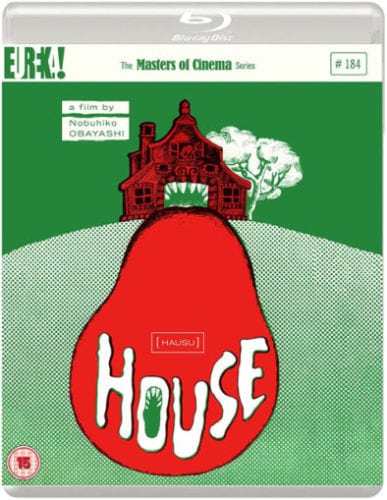
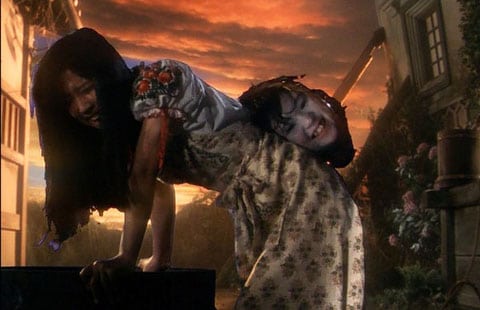
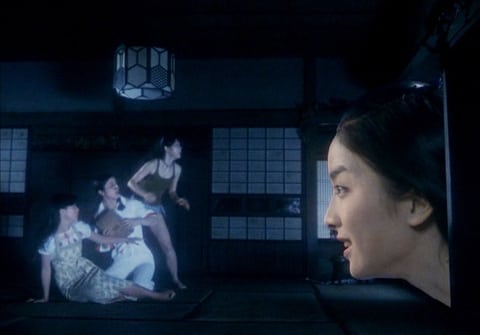


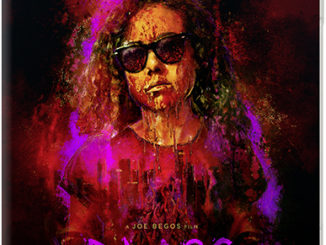
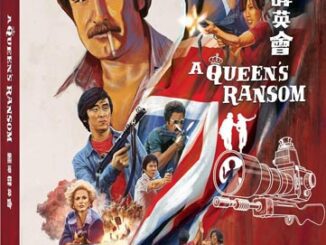
Be the first to comment